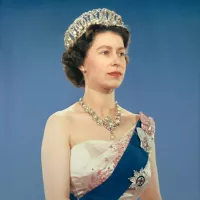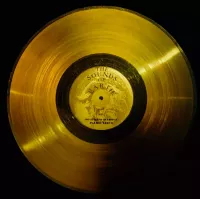Antarctica is the southernmost continent, largely situated within the Antarctic Circle and encompassing the South Pole. It is the fifth-largest continent, significantly bigger than Europe, covering approximately 14.2 million square kilometers. Dominated by the Antarctic ice sheet, the continent features an average ice thickness of 1.9 kilometers.
1907: Discovery of Coal in Antarctica
In 1907, coal was first recorded in Antarctica near the Beardmore Glacier by Frank Wild on the Nimrod Expedition.
1907: Nimrod Expedition
In 1907, during the Nimrod Expedition, led by the British explorer Ernest Shackleton, parties led by Edgeworth David became the first to climb Mount Erebus and to reach the south magnetic pole.
December 1908: First Traverse of the Ross Ice Shelf
In December 1908, Shackleton and three members of his expedition became the first humans to traverse the Ross Ice Shelf.
February 1909: First Crossing of Transantarctic Mountains
In February 1909, Shackleton and three members of his expedition became the first humans to cross the Transantarctic Mountains (via the Beardmore Glacier), and the first to set foot on the south Polar Plateau.
1909: British explorers reach the magnetic South Pole
In 1909, British explorers Robert Falcon Scott and Ernest Shackleton were the first to reach the magnetic South Pole.
December 1911: Amundsen reaches the South Pole
On December 14, 1911, an expedition led by Norwegian explorer Roald Amundsen from the ship Fram became the first to reach the geographic South Pole, using a route from the Bay of Whales and up the Axel Heiberg Glacier.
1911: Roald Amundsen reaches the geographic South Pole
In 1911, Norwegian explorer Roald Amundsen was the first to reach the geographic South Pole.
1912: Discovery of the Adelie Land Meteorite
In 1912, the Adelie Land meteorite, was discovered, making it the first meteorite found in Antarctica. It provided clues about the composition of the Solar System and its early development.
October 1913: First Child Born in Southern Polar Region
On 8 October 1913, the first child born in the southern polar region was a Norwegian girl, Solveig Gunbjørg Jacobsen, born in Grytviken.
1931: Douglas Mawson retired
In 1931, Douglas Mawson, who assumed the leadership of the Magnetic Pole party on their perilous return, retired.
1935: Caroline Mikkelsen lands on an island of Antarctica
In 1935, Caroline Mikkelsen had landed on an island of Antarctica.
1937: Ingrid Christensen lands on the Antarctic mainland
In 1937, Ingrid Christensen became the first woman to step onto the Antarctic mainland.
1955: Ocean Warming Around West Antarctica
Since 1955, the ocean around the West Antarctic has warmed by 1 °C (1.8 °F).
October 1956: US Navy group lands aircraft at the South Pole
On 31 October 1956, a U.S. Navy group led by Rear Admiral George J. Dufek landed an aircraft at the South Pole.
1957: Start of Antarctic Tourism
Tourists have been visiting Antarctica since 1957.
1959: Antarctic Treaty Signing Commemoration
Antarctica Day on December 1 commemorates the signing of the Antarctic Treaty in 1959.
1959: Antarctic Treaty System
In 1959, about 30 countries signed the Antarctic Treaty System. According to the terms of the treaty, military activity, mining, nuclear explosions, and nuclear waste disposal are all prohibited in Antarctica.
1959: Suspension of new Antarctic claims
Since 1959, new claims on Antarctica have been suspended under the Antarctic Treaty System.
1964: First International Agreement to Protect Antarctica's Biodiversity
In 1964, the first international agreement was adopted to protect Antarctica's biodiversity.
1965: Operation 90 by the Argentine Military
In 1965, Operation 90 by the Argentine military was conducted to strengthen Argentina's claim in Antarctica.
1966: End of whaling era on South Georgia
The whaling era, which began in 1786, lasted until 1966. During this time the population of South Georgia varied from over 1,000 in the summer (over 2,000 in some years) to some 200 in the winter.
1969: Six women flown to the South Pole
In 1969, Six women were flown to the South Pole as a publicity stunt.
January 1978: First birth on the Antarctic mainland
On 7 January 1978, Emilio Marcos Palma was the first person born south of the 60th parallel south and the first to be born on the Antarctic mainland at the Esperanza Base of the Argentine Army.
1979: Mount Erebus Disaster
In 1979, an Air New Zealand plane crashed into Mount Erebus, killing all 257 people on board, leading to the suspension of overland sightseeing flights out of Australia and New Zealand.
1980: Convention for the Conservation of Antarctic Marine Living Resources
In 1980, the Convention for the Conservation of Antarctic Marine Living Resources came into force, regulating fisheries to preserve ecological relationships in Antarctica.
1980: Treaty on Sustainable Fishing
In analogy to the 1980 treaty on sustainable fishing, countries led by New Zealand and the United States negotiated a treaty on mining.
July 1983: Lowest Natural Air Temperature Recorded
On July 21, 1983, the lowest natural air temperature ever recorded on Earth was −89.2 °C (−128.6 °F) at the Russian Vostok Station in Antarctica.
1983: Antarctica Coastline Composition
As of 1983, the Antarctica's coastline is composed of 44% floating ice, 38% ice walls, 13% ice streams/glaciers, and 5% exposed rock.
1985: Discovery of the Antarctic Ozone Hole
In 1985, British scientists discovered a large area of low ozone concentration, the 'ozone hole', over Antarctica while working on data gathered at Halley Research Station on the Brunt Ice Shelf.
1985: Discovery of Human Remains
In 1985, the oldest known human remains in the Antarctic region, a skull dated from 1819 to 1825 belonging to a young woman, were found on Yamana Beach at the South Shetland Islands.
1987: Greenpeace establishes base on Ross Island
From 1987, the pressure group Greenpeace established a base on Ross Island as part of its attempt to establish the continent as a World Park.
1987: Montreal Protocol Restricted Ozone-Depleting Substances
In 1987, the Montreal Protocol restricted the emissions of ozone-depleting substances.
1988: Convention on the Regulation of Antarctic Mineral Resource Activities Adopted
In 1988, the Convention on the Regulation of Antarctic Mineral Resource Activities was adopted.
1989: First Icestock Music Festival
Since 1989, the southernmost music festival in the world, Icestock, has been held at McMurdo Station.
1994: Southern Ocean Whale Sanctuary Established
In 1994, the Southern Ocean Whale Sanctuary was established by the International Whaling Commission, covering 50 million km² and completely surrounding the Antarctic continent.
1996: First solo crossing of Antarctica
In the summer of 1996–1997, Norwegian explorer Børge Ousland became the first person to cross Antarctica alone from coast to coast, helped by a kite on parts of the journey.
1997: First solo crossing of Antarctica
In the summer of 1996–1997, Norwegian explorer Børge Ousland became the first person to cross Antarctica alone from coast to coast, helped by a kite on parts of the journey.
1998: Madrid Protocol bans all mining
In 1998, the Protocol on Environmental Protection to the Antarctic Treaty (the Madrid Protocol) entered into force, banning all mining and designating Antarctica as a "natural reserve devoted to peace and science".
1998: Protocol on Environmental Protection comes into effect
In 1998, the Protocol on Environmental Protection to the Antarctic Treaty came into effect, restricting the exploitation of Antarctic resources, including minerals.
2004: Russian Orthodox Holy Trinity Church Opened
In 2004, the Russian Orthodox Holy Trinity Church at the Bellingshausen Station on King George Island opened. The church is staffed year-round by one or two priests, who are rotated every year.
September 2006: Largest Antarctic Ozone Hole
In September 2006, the Antarctic 'ozone hole' reached its largest recorded size, covering almost the entire continent.
2010: Census of Marine Life Released
In 2010, a Census of Marine Life by approximately 500 researchers found that more than 235 marine organisms live in both polar regions, having bridged a gap of 12,000 km.
2010: Satellite Records Lower Air Temperature
In 2010, a lower air temperature of −94.7 °C (−138.5 °F) was recorded in Antarctica by satellite; however, this may have been influenced by ground temperatures.
2011: Alice Giles' Antarctic Performance
In 2011, Australian classical harpist Alice Giles became the first professional musician to perform in Antarctica.
2012: Queen Elizabeth Land Claim Protested
In 2012, the Argentine government protested after the British Foreign & Commonwealth Office designated a previously unnamed area Queen Elizabeth Land in tribute to Queen Elizabeth II's Diamond Jubilee.
2012: "South of Sanity" Film Shooting
In 2012, the first full-length fictional film to be shot in Antarctica was South of Sanity, a low-budget British horror film.
2014: Decrease of Antarctic Sea Ice Coverage
Since 2014, the coverage of Antarctic sea ice has decreased rapidly, following a period of increasing sea ice extent from the late 1970s until 2014.
2015: Norway defines Queen Maud Land
In 2015, Norway formally defined Queen Maud Land as including the unclaimed area between it and the South Pole.
2015: USAP Strategic Vision
In 2015, the United States Antarctic Program (USAP) published a Strategic Vision for Antarctic and Southern Ocean Research, stressing the prominent role of the Southern Ocean in the global carbon cycle and sea level rise.
2017: Antarctica Population numbers
As of 2017, the number of people conducting and supporting scientific research and other work on the continent and its nearby islands varies from about 1,200 in winter to about 4,800 in the summer, with an additional 136 people in the winter to 266 people in the summer from the 2 civilian bases.
2017: Scientist Population in Antarctica
In 2017, there were more than 4,400 scientists undertaking research in Antarctica.
2019: Peak Antarctic Tourism Season
During the 2019–2020 season, over 74,000 tourists visited Antarctica, with 18,500 travelling on cruise ships without exploring on land.
2020: Decline in Antarctic Tourism due to COVID-19
After the start of the COVID-19 pandemic in 2020, the numbers of tourists visiting Antarctica fell rapidly.
2020: Longest Lasting Ozone Hole Event
In 2020, the longest-lasting ozone depletion event occurred over Antarctica.
2021: USAP Midterm Assessment
In 2021, the United States Antarctic Program (USAP) released a Midterm Assessment on the 2015 Strategic Vision for Antarctic and Southern Ocean Research.
2022: Antarctic Film Festival participation
As of 2022, 48 stations registered to participate in the Antarctic Film Festival, which is held annually between bases and designed for short films of 5 minutes or less.
2022: Consultative status under Antarctic Treaty
In 2022, 29 countries have 'consultative status' under the Antarctic Treaty, allowing them to participate in decision-making based on their demonstration of significant research on Antarctica.
2022: Australian Antarctic Program Strategy and Action Plan
In 2022, the Australian Antarctic Program (AAP) released a new Strategy and 20-year Action Plan (2022–2036) to modernize its Antarctic program.
2023: British Antarctic Survey Strategy Report
In 2023, the British Antarctic Survey (BAS) released a 10-year strategy report (2023–2033) to reduce greenhouse gas emissions and to focus on creating sustainable living on Earth.
2033: End year of British Antarctic Survey Strategy Report
In 2033, the British Antarctic Survey (BAS) 10-year strategy report to reduce greenhouse gas emissions and to focus on creating sustainable living on Earth ends.
2036: End year of Australian Antarctic Program Action Plan
In 2036, the Australian Antarctic Program (AAP) Strategy and 20-year Action Plan that released in 2022 ends.
2048: Review of Protocol on Environmental Protection
The Protocol on Environmental Protection to the Antarctic Treaty, which restricts the exploitation of Antarctic resources, is due to be reviewed in 2048.
Mentioned in this timeline

Elizabeth II reigned as Queen of the United Kingdom and...
The United States of America is a federal republic located...
New Zealand is an island country located in the southwestern...
Australia officially the Commonwealth of Australia encompasses the Australian mainland...
Argentina officially the Argentine Republic is located in the southern...

Music is a cultural universal involving the arrangement of sound...
Trending

42 minutes ago Bitwise Launches XRP ETF Amidst Market Activity; XRP Staking Explored.
42 minutes ago JPMorgan Warns MicroStrategy Delisting Could Cause Billions in Losses Due to Bitcoin Strategy.

43 minutes ago Michael B. Jordan Honored at American Cinematheque Award, Shares Emotional Speech.
43 minutes ago Diane Keaton Defended Woody Allen Until Death Despite Abuse Allegations, Sources Say
2 hours ago MetaMask and TRON DAO partner to boost Web3 development at DevConnect Buenos Aires.
2 hours ago Akaash Singh and Myron Gaines in Feud Over Jasleen Singh's Podcast
Popular

XXXTentacion born Jahseh Dwayne Ricardo Onfroy was a controversial yet...

William Franklin Graham III commonly known as Franklin Graham is...

Cristiano Ronaldo often nicknamed CR is a Portuguese professional footballer...

Candace Owens is an American conservative political commentator and author...

Michelle Obama is an American attorney author and former First...

Marjorie Taylor Greene known as MTG is a far-right American...